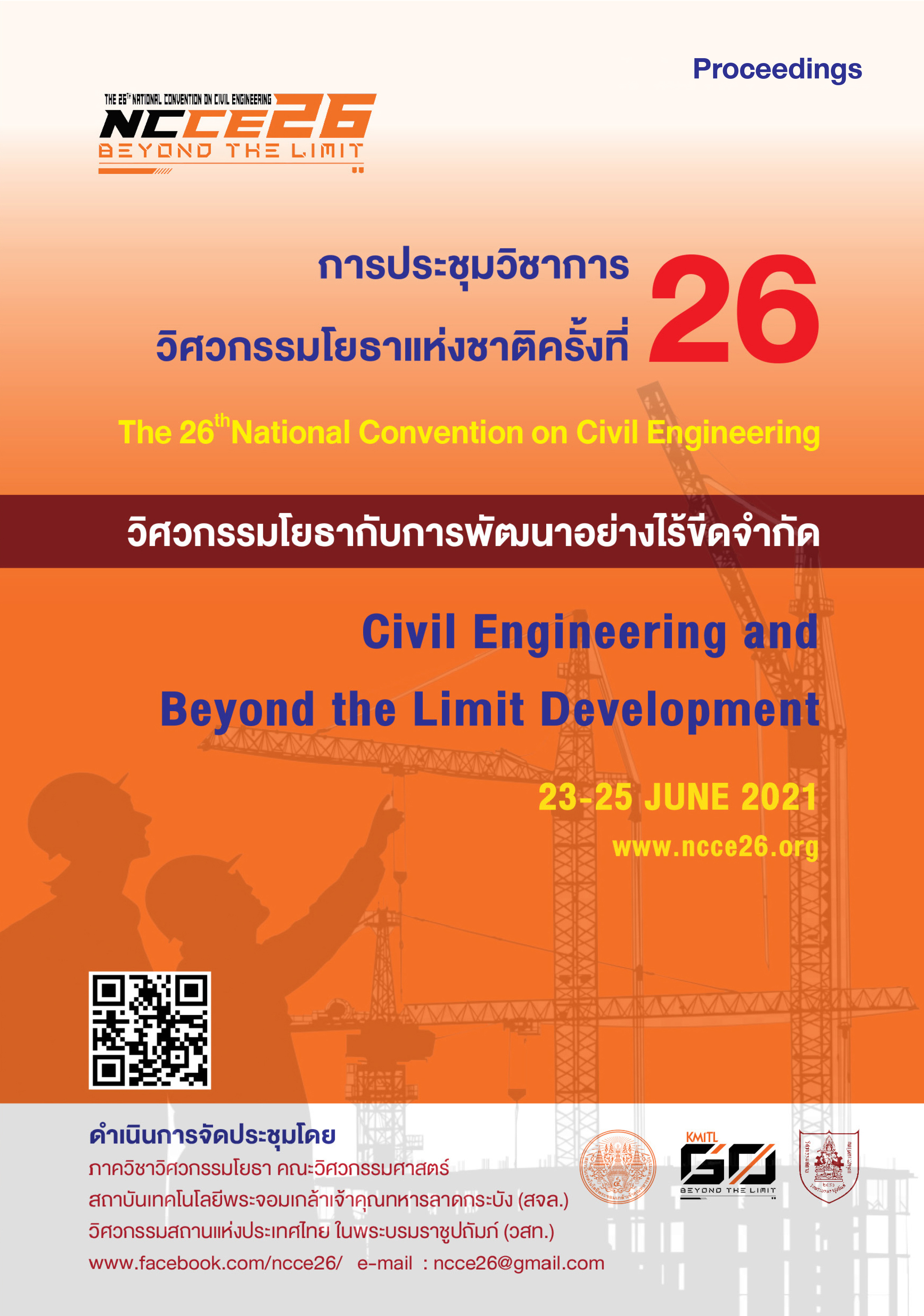3D Laser Scanning Data and Finite Element Method for Seismic Analysis of Thai Bell-Shaped Pagoda. A case study of Wat Si Phichit Kirati Kanlayaram.
Keywords:
3D Laser Scanning, Bell-shaped Pagoda, Finite Element Method, Seismic Analysis, Thai Historic PagodaAbstract
The important Thai historic pagodas in the Sukhothai era were constructed for more than 500 years. Although Thailand is located on a low to moderate seismicity area, Sukhothai is in a high-risk area due to the Uttaradit fault. Consequently, the historic structures in Sukhothai could be affected by the earthquake. This study presents the effect of seismic load on the Thai bell-shaped pagoda located on the seismicity area at Sukhothai. The Thai bell-shaped pagoda at Wat Si Phichit Kirati Kalayaram is selected as a case study. The terrestrial laser scanning technology was applied to achieve the 3D point cloud data of the pagoda. The simplified 3D solid model of the pagoda is developed based on the obtained three-dimensional point cloud data. The pagoda's current configurations are evaluated to determine the inclination angle on the top of the pagoda. The finite element method is applied for structural analysis. According to the static and free vibration analysis, the distribution of stresses, displacement, natural frequencies, and its corresponding mode shapes are presented. The pagoda responses due to at least three different ground motions compatible with the Department of Public Works and Town & Country Planning standard (DPT standard 1302) are presented and discussed in this paper.
Downloads
Downloads
Published
How to Cite
Issue
Section
License
บทความทั้งหมดที่ได้รับการคัดเลือกให้นำเสนอผลงานในการประชุมวิชาการวิศวกรรมโยธาแห่งชาติ ครั้งที่ 26 นี้ เป็นลิขสิทธิ์ของ วิศวกรรมสถานแห่งประเทศไทย ในพระบรมราชูปถัมภ์



